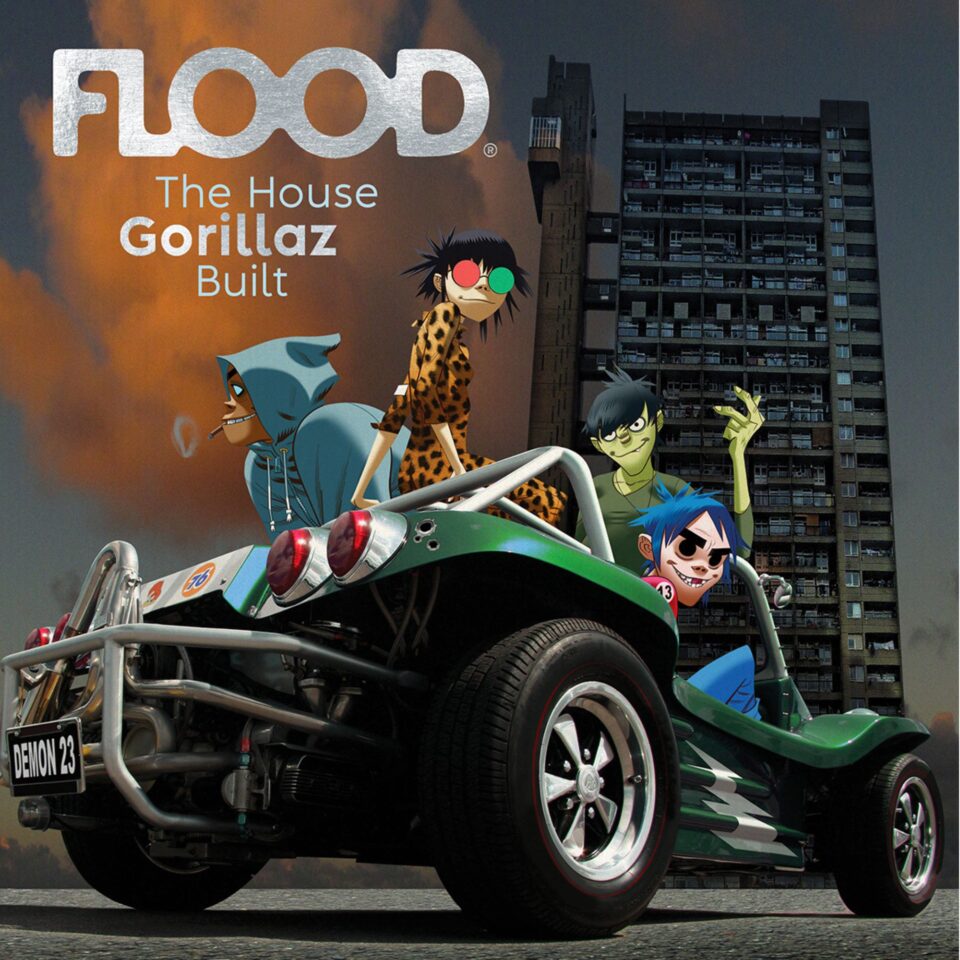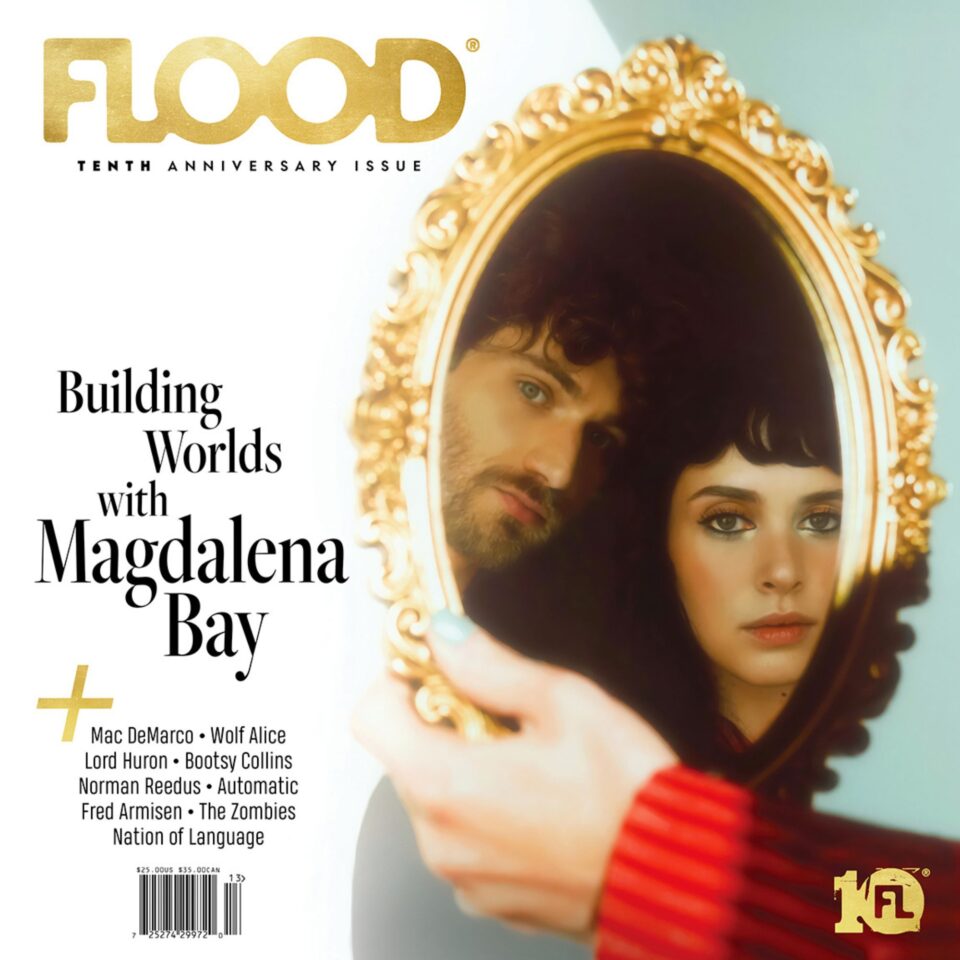Montreal-based composer and producer Chris d’Eon makes excitingly unclassifiable music. His new LP Leviathan sounds like chamber music for acid heads, featuring piano ballads, harpsichord-led psychedelic freakouts, and boundaryless exercises that land somewhere between Steve Reich and Oneohtrix Point Never. The artist was affiliated with the Hippos in Tanks label before finding his way to his current home, Chicago-based Hausu Mountain, who place a premium on pop-warping experimentations.
His 2021 album Rhododendron was pastoral in nature, placing an emphasis on string suites and calming melodies. Here, he casts his net a bit wider, using imitative synths known as romplers to create a sound truly incomparable in the independent music sphere. He explains that the compositional method for the album cut “Gilded Cutlass” saw him reworking a drum and bass track as something orchestral. “I think this one is probably the most demonstrative of what I’ll just go out on a limb and call the ‘d’Eon school of phrasing,’” he explains, “with melodies going up and down a lot, and dueling instruments playing the lead melody, with one going up when the other goes down.”
To figure out the origins behind the rest of Leviathan’s mysterious beauty, we had d’Eon break down his new album track by track. Read up on how Burt Bacahrach and Ciara influenced the record’s creation and stream it below.
1. “Intro”
I always need to have an intro track in my albums for some reason. I don’t know why I’m so picky and formalistic with the structure of records—I usually work on tracks in the order they show up in the album, so I’ll work on track one, then track one, etc., keeping in mind where I am in the album when I write the music. I also like to do blocks of 20 minutes for sides A and B, with a little intro for each. I picked up this habit many years ago when I was working on my album from 2012 called LP, where I was sort of imitating the Yes album Tales From Topographic Oceans, with four 20-minute blocks over two vinyl records. All of these habits have just sort of stayed with me.
2. “Rhododendron pt. IV”
Another unnecessary habit I have is naming things like this with “pt. I,” “pt. II,” and so on. I often retread the same ideas in different songs, and I’m also not very good at naming things, so I just reuse song titles because it’s easier than coming up with a new name. Naming the tracks is really the last thing I do. It’s really an afterthought. I used to just use numbers for the names of tracks, but it looks kind of pretentious. Anyway, I was listening to a lot of Burt Bacharach when I made side one of this record, and it’s really noticeable here.
3. “Figurine”
I was so, so close to calling this one “Transparency pt. V” or whatever number I’m up to at this point, but I decided wisely against it. I wanted to include more of the R&B style in this record, sort of like a song I’d write in 2011, but with the rompler sound palette I use these days. You’ll start to notice most of my tunes follow a simple A-B-A-B pattern, alternating between two sections, with slightly different instrument combinations each time. Since this record doesn’t really have any meander-y improvisational tracks, basically every track on this album has this same structure.
4. “Gilded Cutlass”
This was originally a drum and bass track, but I re-worked it with orchestral instruments for this record. I think this one is probably the most demonstrative of what I’ll just go out on a limb and call the “d’Eon school of phrasing,” with melodies going up and down a lot, and dueling instruments playing the lead melody, with one going up when the other goes down.
5. “Heat Wave”
I kind of wanted to have a beat that sounded like 2010s Ciara, with little improvised instruments coming in and out for a while. I love it when random instruments show up unexpectedly, so I really went crazy with it on this one.
6. “The President Has Been Shot”
I was putting this one together around the same time the Prime Minister of Japan was shot, so I called it that. Yes, I know he’s the prime minister not the president, but “president” sounds better for a title. This is the end of side one, so it goes out with a bang. I like a big dramatic, abrupt ending.
7. “Collar”
Sort of the “intro” to “side B” of the “record.” All these little conventions are really just skeuomorphisms, unnecessary but comforting vestiges of the LP format. As I’ve said, I like formalism, and in fact I really need it in order to make any forward progress on a piece of music. I couldn’t be an artist who releases singles one by one, or even EPs, it would drive me insane. I need to do a whole long-player in order to feel any sense of accomplishment. Anyway, I’ll have you know that this is, in fact, the only track that actually contains harpsichord. I know with these old romplers everything sounds like a harpsichord, but this is the only one with the real deal.
8. “Climbing the Overhang”
I kind of wanted to take a break from strictly diatonic stuff with this one. It’s not my area of expertise, and I kind of wish I hadn’t used the e-piano patch I used, but I don’t like editing after something’s done, and I hate perfectionism.
9. “Waiting Room”
Lots and lots of stacked fourths here. Again, the A-B-A-B structure is really noticeable here.
10. “Installation of the Cisterns”
Probably the most “freeform” track on the album. The little middle part is a little callback to earlier in the album. I like to let little themes bleed into other songs, because not only is it a cheeky little callback, it’s also a chance to reuse material that works perfectly fine in multiple places. D.R.Y.: do repeat yourself!
11. “Leviathan”
I wrote this song years ago, probably 2012 or ’13, and reworked it for this record. Another one of my little habits is to cram as many instruments into the last song as possible, which makes it really hard to mix and master. I really don’t apply a lot of audio effects to individual instruments—I find that to be a massive waste of time, so I usually just keep whatever onboard effects the instrument has on whatever patch I’m using. These old Roland romplers usually have pretty tasteful defaults.







